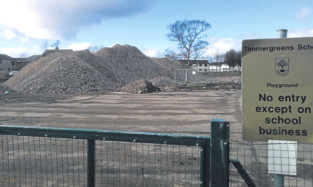Primary school numbers in Angus could be capped, with the council admitting some classes are full to bursting point.
Parents may have to deal with the harsh reality that their local primary school is full and face the heartbreak of sending their child to a school outwith their catchment area.
The current situation has prompted fears there may be “no room at the inn” at new schools in Arbroath within days of the doors opening at the multi-million-pound developments.
Along with fellow councillors, Arbroath councillor Ewan Smith, formerly vice-convener of education, welcomed plans to accurately review the capacity of each primary school in the county before any capping measures are introduced.
He said: “We need robust, accurate information over the true capacities of our schools for two reasons to ensure our resources are at the best places and, even more critically, to ensure accuracy if we ever endure a school closure proposal again.
“It’s also absolutely critical that the new measurements are applied to the new schools at Timmergreens and Warddykes, because I already fear both of those will have no room at the inn within days of opening.”
Councillors agreed the recommendations of a report by strategic director of people Margo Williamson, which acknowledged certain Angus primary schools are beyond capacity with others almost full.
It proposed roll capping be used for all classes at schools where rolls are reaching, or over capacity, so that optimum numbers are not exceeded.
This will ensure places are available for pupils who are within the catchment area.
Conversely, the director went on to state: “This may mean, however, that in-zone pupils cannot attend their zoned school and may, therefore, have to be transported to another establishment.
“Capping schools will be done on an individual basis, with reports outlining the reasons for this being presented to committee for comment.
“Capping at these schools will be reviewed on an annual basis.”
As well as agreeing to the principle of roll capping, the authority’s children and learning committee also agreed in principle to a policy of reserving places within classes that have limited spaces.
It is proposed that two spaces per primary stage are kept as reserved places for pupils moving in to a school zone.
The local authority will identify classes with limited spaces at specific stages in the school year and publish details about reserved spaces on the Angus Council website so parents and carers can see how they are being held at any point in the school year.
Head teachers will have to present figures annually with consideration to patterns of migration, residential development and movement of families in and out of areas, as well as any catchment area changes.
Assurances have been given that the decision on the number of reserved places at schools will be open, transparent and fair with an appeals process open to parents and carers.
Before capping and reserved places are brought in, the council will review how it determines primary school capacities, in line with Scottish Government guidance, as the existing system is no longer fit for purpose.
Instead of the current blanket approach to calculating primary school capacity, Angus will assess each school on its own merits, considering design, core facilities and effective delivery of the modern curriculum.
The proposed “capacity profile” for each primary school will show the maximum number of pupils that can be accommodated per class, the number of rooms and a capacity based on core facilities.
Factors that affect capacity will be identified, along with whether they limit or meet requirements.
Mr Smith said that a new system of establishing school capacity was long overdue and would give a more realistic picture of how many children could be taught at any given school.
He described the outdated system as “fundamentally flawed” as it was plain to see that not all two-stream schools could have the same capacity.
He said: “Some of the schools, particularly the new build ones in Forfar and Carnoustie, are, in reality, far tighter and far closer to capacity than what we currently see in black in white. There are similar examples in Arbroath with the likes of Inverbrothock and Hayshead almost full.
“In one school I visited, space was so tight that the dining hall was doubling up as a music room.
“On the flip side we have some older buildings Hayshead in Arbroath for example that has some great space despite a large school roll.
“It’s incomparable in space and design to the new builds we are seeing now.”
